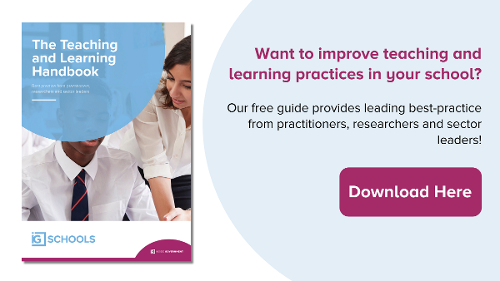School closures through the pandemic made delivering elements of the curriculum quite difficult, despite opening up positive opportunities for remote learning elsewhere. For geography fieldwork in particular, being unable to leave our homes did not lend itself well to engaging pupils with the outdoors. Here, Brendan Morris, Geography Teacher and Head of Year 11 at Stamford School, highlights the importance of maximising opportunities for re-engaging with fieldwork, and offers some ideas on how.
One of the most poignant recollections of teaching geography virtually was looking into the camera lens and thinking, “is this what my subject has been reduced to?” I am sure that many other geography teachers across the country felt the same way during lockdown and that the subject was losing its unique selling point – the ability to study in the field. As we enter the final stages of roadmap out of this pandemic (and hopefully to normality), this blog is somewhat of a call to arms, a call to subject experts to reconnect their students with places, experiences and the, ‘doing,’ of geography in the physical world.
The curriculum component of fieldwork is of fundamental importance to a high-quality geographical education with teaching and learning taking place through the first-hand experience of phenomena (Boyle et al., 2007). Geographical fieldwork is the quintessential vehicle through which students’ construct their own learning and become more acquainted with the subject discipline. Yet, it is the very task that, as practitioners, we are sometimes quick to find constraints as to why these types of tasks cannot be completed. The Geographical Association and the Field Studies Council have put together a bank of resources to help overcome these constraints and offer advice on a variety of fieldwork approaches.
At this juncture, you may be considering the simplicity (or even possibly condescending) nature of the blog and how fieldwork is integral for the subject of geography. Please allow me a moment for my argument to become more nuanced. The turbulent nature of 2020 has caused difficulties for many teachers to undertake physical fieldwork activities, yet as a profession, we have successfully adapted and responded to these challenges through virtual fieldtrips of glaciated landscapes, “fieldwork live,” broadcasts by the FSC or the use of StoryMaps within ArcGIS. Now, is the moment to apply the subject’s two most important concepts: space and time to re-establish the importance of physical fieldwork.
Fieldwork does not have to be exotic or expensive for it to constitute, “fieldwork.” The salient issue is allowing students the opportunity – at whatever scale – to understand and appreciate the messiness of geographical reality. The practicalities of delivering fieldwork are tough at the best of times within a normal school year, let alone a COVID year where teachers are inundated with CAG/TAG marking. One question I have certainly asked of myself, upon the return to the physical classroom is, “can this material be delivered practically outside?”
Again I risk stating the obvious but not all lessons are adaptable for outdoor learning but certainly within Key Stage 3, there is increased flexibility for outdoor learning to take place and enable your students to rediscover their engagement with the external world. My Year 7 classes are currently studying about weather and climate and have used Skitch App to interpret the daily weather which which has fed into a larger micro-climate study project after the May half-term and will require four double lessons (75mins) to complete the booklet. I attach an adaptable Key Stage 3 microclimate booklet with this particular blog. Within Key Stage 4, is there the possibility of reordering subject material that may lend itself to outdoor learning? Particular topics that spring to mind include the deliverance of field sketches or experiencing climatic conditions when teaching about heatwaves.
With the compulsory deliverance of fieldwork at Key Stage 5 – can this summer term provide your students with an opportune time to practice, or even collect, their data for their A-level investigations? At the Stamford Endowed Schools, we provided our Year 12 geographers with designated human and physical fieldwork days that were delivered on site.
Despite there being a number of planning, equipment and location difficulties/ obstacles. These can be definitely overcome and I do wonder about the long-term benefits that this will have for our students, if we actively use this summer time to maximise the amount of outdoor learning and fieldwork. As a key advocate of constructivism and the importance that the OECD place on what education will look like in 2030 with collaboration, communication and critical thinking being of salient importance – fieldwork holds the key for the discipline to once again be reunited with the element that makes the subject so unique and special. After all as John Dewey states,
‘give the pupils something to do, not something to learn; and the doing is of such a nature as to demand thinking; learning naturally results.’
